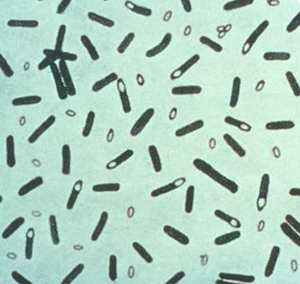There are many different classes of antibiotics each exerting a different type of inhibitory effect that specifically impacts bacteria. Bacterial cells are prokaryotic; primitive cells that differ significantly from humans’ eukaryotic cells.
Quinolones exert their bacteriocidal effect by interfering with a bacterium’s ability to make DNA (replication). Many quinolones antibiotics belong to a subgroup called fluoroquinolones, which have a fluoro functional group associated with the molecule. Both terms are therefore used to describe antibiotics in this class.
Each article in this series covers a specific class of antibiotic and includes the following information:
- a list of the specific antibiotics that fall in the class (generic and brand names)
- mode of action
- type of infection the antibiotic class to against
- type of bacteria inhibited or killed
- pros and cons of using the class of antibiotics
Main Classes of Antibiotics
- Aminoglycosides
- Cephalosporins (a Beta-lactam)
- Macrolides
- Penicillin (a Beta-lactam)
- Quinolones (Fluoroquinolones)
- Sulfonamides
- Tetracyclines
Quinolones
The quinolones are classified into generations based on their antibacterial spectrum, with earlier generation quinolones more effective against Gram- bacteria and the spectrum of activity expanding to include more Gram+ bacteria with the later generations. Some representative quinolones include:
1st generation
- cinoxacin
- nalidixic acid (NegGam, Wintomylon)
- pipemidic acid (Dolcol)
2nd generation
- ciprofloxacin (Ciprobay, Cipro, Ciproxin)
- norfloxacin (Lexinor, Noroxin, Quinabic, Janacin)
- ofloxacin (Floxin, Oxaldin, Tarivid)
3rd generation
- levofloxacin (Cravit, Levaquin)
- sparfloxacin (Zagam)
- tosufloxacin
4th generation
- clinafloxacin
- gemifloxacin (Factive)
- moxifloxacin (Avelox,Vigamox)
- gatifloxacin (Zymar)
Mode of Action of Quinolones
Quinolones are bacteriocidal drugs, meaning that they kill bacteria. These antibiotic drugs inhibit the bacterial DNA gyrase enzyme which is necessary for DNA replication. Since a copy of DNA must be made each time a cell divides, interfering with replication makes it difficult for bacteria to multiply.
How DNA is packaged is very different in bacteria as opposed to eukaryotes. Bacteria supercoil DNA using DNA gyrase, whereas eukaryotes coil DNA around histone proteins. Because quinolones specifically target DNA gyrase, they do not interfere with human DNA.
Antimicrobial Spectrum of Quinolones
Quinolones are known as broad-spectrum antibiotics, effective against many different types of bacteria, both Gram-positive (Gram +) and Gram-negative (Gram -).
Type of Infections Quinolones are Used For
Clinical applications of quinolones include the treatment of common urinary tract infections, and certain gastrointestinal infections, gynecological infections / STDs, skin infections, and upper and lower respiratory infections (such as sinusitis, pneumonia, bronchitis).
Pros & Cons of Quinolones
Adverse Effects
Quinolones typically have few side effects, most commonly including nausea, headache, dizziness, and confusion. Rare but serious adverse events have been reported, such as prolongation of the corrected QT interval, phototoxicity, liver enzyme abnormalities, arthropathy (joint problems), as well as cartilage and tendon abnormalities.
Resistance
Resistance to quinolones can develop very quickly, even during a course of treatment. The newer quinolones are rarely used as first-line agents, since over and inappropriate use of this class of antibiotic is likely to worsen current problems with antibiotic resistance. A variety of pathogens, including Staphylococcus aureus (pathogenic Staph), Enterococci, and Streptococcus pyogenes (the causative agent of strep throat) now exhibit resistance.
More Antibiotic Resources
The information in this article was obtained from a variety of sources, including the text book Foundations in Microbiology by Kathleen Park Talero (2008) and Oliphant & Green’s article Quinolones: A Comprehensive Review, published in 2002 in the journal American Family Physician. To learn more about bacteria and prokaryotes in general, see the microbiology information on the science website Science Prof Online.
* The information in this article is not meant to be used for self-diagnosis or treatment of illness. If you are sick, seek help from a trained medical professional, not a computer.








